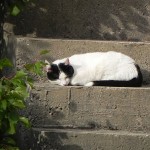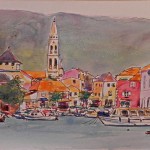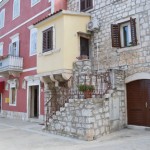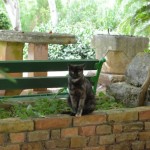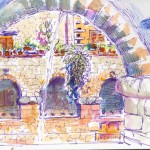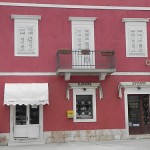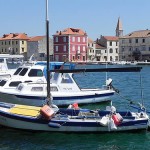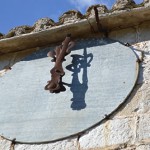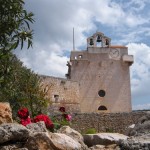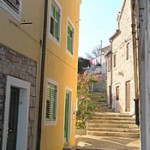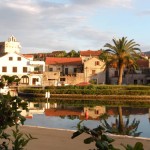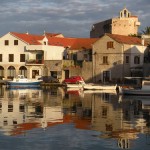Humac is not so much an abandoned village, as a seasonal one where the residents of Vrisnik would come in the summer for grazing livestock and growing crops. The main part of the village dates back to the 17th century, although it was originally established in the 13th century. Located way up in the high country, there are spectacular views all around.
The houses in Humac are in varying stages of repair and it’s a great place to see old stone farm buildings within their own courtyards in the traditional style. It’s a fascinating place to wander around, largely deserted as it is, like a snapshot of an older time. You’ll notice stone gutters on the buildings and water channels leading the rainwater into cisterns as saving water is crucial to surviving up here.
Konoba Humac is open in summer, and that’s where we have our lunch, out on their lovely terrace. There’s no electricity or running water up here, everything is cooked on the grill. Jakov and Keti grow their own fruit and vegetables, olives and vines, all ecologically done. They also have a bowling alley, complete with an odd assortment of wooden balls that must give a certain random element to any game!
Exploring out from Humac, there are ancient tracks to follow for a hike and sketch. Following the path up the hill, the church has recently been renovated, and is open on request. The patron saints of the village are St John and St Paul, who are present as rather delicately painted statues over the altar.
At the top of the path is a spectacular panoramic viewpoint. Northwards, you can see the island of Brač and the mainland, while to the south are Korčula and Pelješac, west to Vis and maybe in optimum conditions, Italy in the far distance. At this point, you’re standing on the 50 mile long east-west mountain ridge that makes up Hvar’s spine. From here, you can walk and/or bike along the ridge trail in either direction.
There is also a guided walk from Humac to Grapčeva cave, where remnants of Hvar’s neolithic culture (5,000 – 4,000 BC) were found. The cave consists of one large hall and another smaller one surrounded by hallways and chambers with stalactites and stalagmites.





























